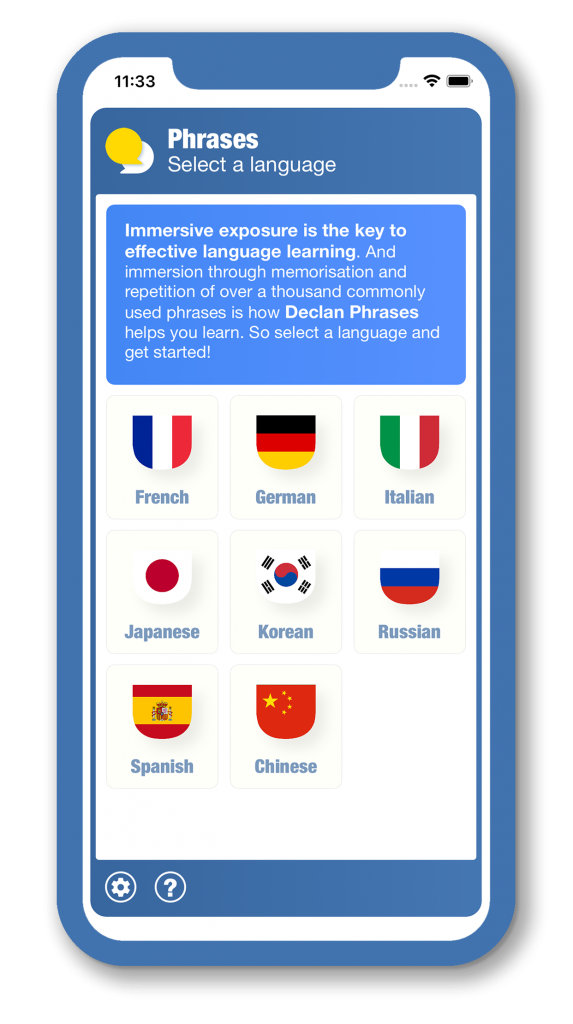Pronouncing French is one of the major barriers to learning French for English speakers. Many text and phrase books use strange English transliterations that try to mimic how French sounds though writing in English. So we get something like ZHUH PAHRL for je parle (I speak).
This kind of simple transliteration from French to the Latin letters used in English is problematic on several levels. Firstly, the pronunciation of letters in English is very inconsistent. For example, the letter ‘c’ can sound like a ‘k’ (cat) or an ‘s’ (cease) depending on the word. Also there are quite a few French phonemes (sounds used when talking) that do not exist at all in English. For example the ‘an’ (ɑ̃ in IPA) in croissant, and ‘eu’ (œ in IPA) in neuf (nine) – neither of these sounds are used in English.
International Phonetic Alphabet (IPA)
The International Phonetic Alphabet (IPA) is a written system of phonetic notation that was devised as a way to represent every spoken sound of every language in the world. And it is very useful for students of foreign languages, including French.
While using a less technical transliteration scheme (such the ZHUH PAHRL we saw above) as it appears less daunting, all these seeming simpler schemes are either wholly unsuited to the French language, and/or they required as much ‘learning’ as the IPA. It very much worth the student’s effort to learn the subset of 39 IPA symbols required to perfectly describe the pronunciation of all French words.
One extra symbol that you will encounter is the liaison undertie ‿. In French a silent final consonant may be pronounced, in some syntactic contexts, when the following word begins with a vowel or non-aspirated ‘h’. Many words with silent final consonants have utterly lost them, i.e. neither the ‘n’ in million nor the ‘t’ in art are ever pronounced regardless of whether the follow word begins in a vowel. A liaison should not be made just because a word ends in a silent consonant and the next one starts with a vowel. In the IPA transliteration scheme the undertie ‿ appears between words where liaison is happening.
The table below sets out the 39 IAP symbols required to precisely pronounce French.
Consonants
| IPA | Pronunciation guide |
| b | the “b” in boy, baby and rob |
| k | the “c/k” in can, speaker and stick |
| ʃ | the “sh” in she, station and push |
| d | the “d” in do, ladder and bed |
| f | the “f” in food, offer and safe |
| g | the “g” in get, bigger and dog |
| ʒ | the “s” in measure, television and beige |
| h | the “h” in happy, ahead |
| ɲ | the “gn” sound in lasagne or espana. |
| l | the “l” in lie and ply |
| m | the “m” in make, summer and time |
| n | the “n” in no, dinner and thin |
| ŋ | the “ng” in singer, think and long |
| p | The “p” in put, apple and cup |
| r | the “r” in run, far and store; tends to be raspy and rolling. |
| s | the “s” in sit, city, passing and face |
| t | the “t” in top, better and cat |
| v | the “v” in very, seven and love |
| x | the “ch” in Scottish loch and the German ach or ich |
| z | the “z” in zoo and buzz |
Vowels
| IPA | Pronunciation guide |
| a | the “a” in aren’t – pronounced at the front of the mouth. |
| ɑ | say “pas” with your lips rounded – it is that “a” sound. |
| e | the “er” in her |
| ɛ | the “e” in ever, head and get |
| ə | the “uh” sound in suspense |
| œ | a bit like the “ur” in “urn; the German “ö” in schön |
| ø | a “ue” with pursed lips; “ur” in urgent |
| i | the “e” in eat, see and need |
| o | the “o” in ostrich |
| ɔ | the “or” sound in all, or, talk and saw |
| u | “oo/ou” in ooze, food, soup, sue; front of the mouth with pursed lips |
| y | “ye” in yes, onion |
Nasal vowels and semi vowels
| IPA | Pronunciation guide |
| ɑ̃ | a nasal “on”; the “an” in croissant |
| ɛ̃ | a nasal “a” |
| õ | a nasal “o” |
| œ̃ | a short nasal “u” in under |
| j | “zh” or “jer” |
| ɥ | “we” with pursed lips and tongue at rear |
| w | the “w” in wear and away |

If you are interested in a fun and effective way to practice the foreign language you are learning, give the Phrases app a try.
Immerse yourself in the language you are learning with ‘Phrases’ — using repetition, reenforcement and memorization to develop an intuitive feel for the language.
The languages available include French, German, Italian, Spanish, Russian, Korean, Japanese and Chinese. And more are coming soon.
Give it a try and download here : iPhone and iPad and Android.